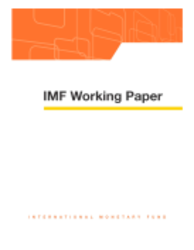
The Myth of Post-Reform Income Stagnation in Brazil
This paper uses Engel curves to estimate real income growth in Brazil. The estimated per capita household real income growth in metropolitan areas during 1987-2002 is about 4½ percent per year, well above the "headline" growth of 1½ percent obtained by deflating nominal incomes by the CPI. This suggests a substantial CPI bias during that period, likely owing to one-off effects of trade liberalization and inflation stabilization. The estimated unmeasured gains are higher for poorer households, implying a marked reduction in "real" inequality. This finding challenges the conventional wisdom that post-reform real income growth in Brazil was low.
Publication date: December 2006
ISBN: 9781451865356
$18.00
Add to Cart by clicking price of the language and format you'd like to purchase
Available Languages and Formats
| English |
Prices in red indicate formats that are not yet available but are forthcoming.
Topics covered in this book
This title contains information about the following subjects.
Click on a subject if you would like to see other titles with the same subjects.
Public Finance , CPI bias , Inflation Stabilization , Economic Reform , expenditure , expenditures , total expenditure , income growth , expenditure distribution , Consumer Economics: Empirical Analysis , Measurement and Analysis of Poverty , Economic Development: General , General Aggregative
Also of interest
Summary
Copyright © 2010 - 2025
Powered by:
AIDC



